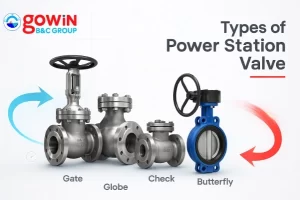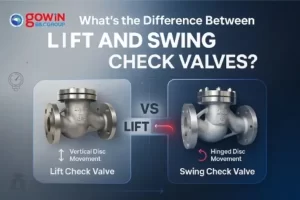A valve in a conduit for liquids or gasses is comparable to a traffic officer. It is a device that aids in regulating the amount and direction of fluid flow via a pipe. Think of it as a gate through which fluid flows freely while it’s open and ceases when it’s closed.
There are many varieties of valves, including check, gate, and ball valves. They have the ability to mix, halt, or regulate fluid flow. Though valves are essentially a component of pipe fittings, their significance and variety sometimes cause us to see them as independent entities.
Valves may play a major role in a plant or any other system that has pipes. They may occasionally cost up to 30% of the overall cost of the pipes!
What are the different types of valves?
Gate Valve
Consider gate valves as the factory pipe gatekeepers. They are the most common form found in plants. To allow liquids to flow through or entirely stop, the internal gate moves in a straight line.
Suitable for a wide range of fluids, including water, steam, gas, air, and even thicker liquids like sludge, gate valves are excellent at halting flow when necessary. They are, therefore, the preferred valves for managing various types of materials in industries.
Gate valves are inexpensive and easy to disassemble for maintenance. Because they have a straight channel that allows the fluid to pass through them without rotating, they don’t provide much barrier to the flow of fluids.
Globe Valve
Consider a globe valve, which is a round tool with a fixed seat and an internal moving element. Inside, there is a barrier dividing it into two halves. Twisting the wheel-connected movable component will shut or open the valve. This valve is useful for regulating the amount of fluid that passes through and for initiating and stopping the flow of fluid.
Globe valves are particularly useful in applications where precise flow control and leak prevention are critical. Consider chemical, feedwater, or cooling water systems. These valves are ideal for controlling flow and turning things off, even if they could be a little more expensive than gate valves.
Ball Valve
Consider a ball valve as having an internal hollow ball that controls the flow of fluids. The ball has a handle that you may use to turn it. The fluid may pass through the ball when its hole coincides with the fluid’s entry point. A quarter turn of the handle causes the ball to spin and obstruct the flow.
Ball valves are less costly, lighter, and smaller than gate valves of the same size. Simply by glancing at the valve, you can tell whether it is open or closed. The handle is open when it aligns with the flow; it is closed when it is sideways. Ball valves are easy to use, long-lasting, robust, and repairable without disassembling. They also let a lot of fluid flow through and manage high pressure effectively.
Butterfly Valve
Consider a butterfly valve as a rotating metal disk on a stick. The valve may be opened or closed with only a quarter turn of the handle. The disk blocks everything when it is closed. Open, however, allows fluid to flow through readily since the disc acts like a face facing the direction of the flow.
Butterfly valves are used in a wide range of applications, including fire safety, slurry services, vacuum services, air or gas installations, cooling water systems, and high-pressure or high-temperature environments like steam services. Because they’re spherical and compact, these valves are simple to install and fit into confined areas. Large valves also function effectively with their compact shape.








